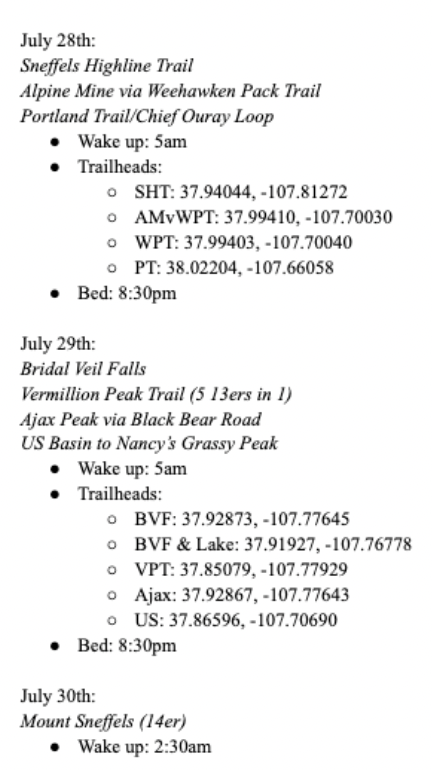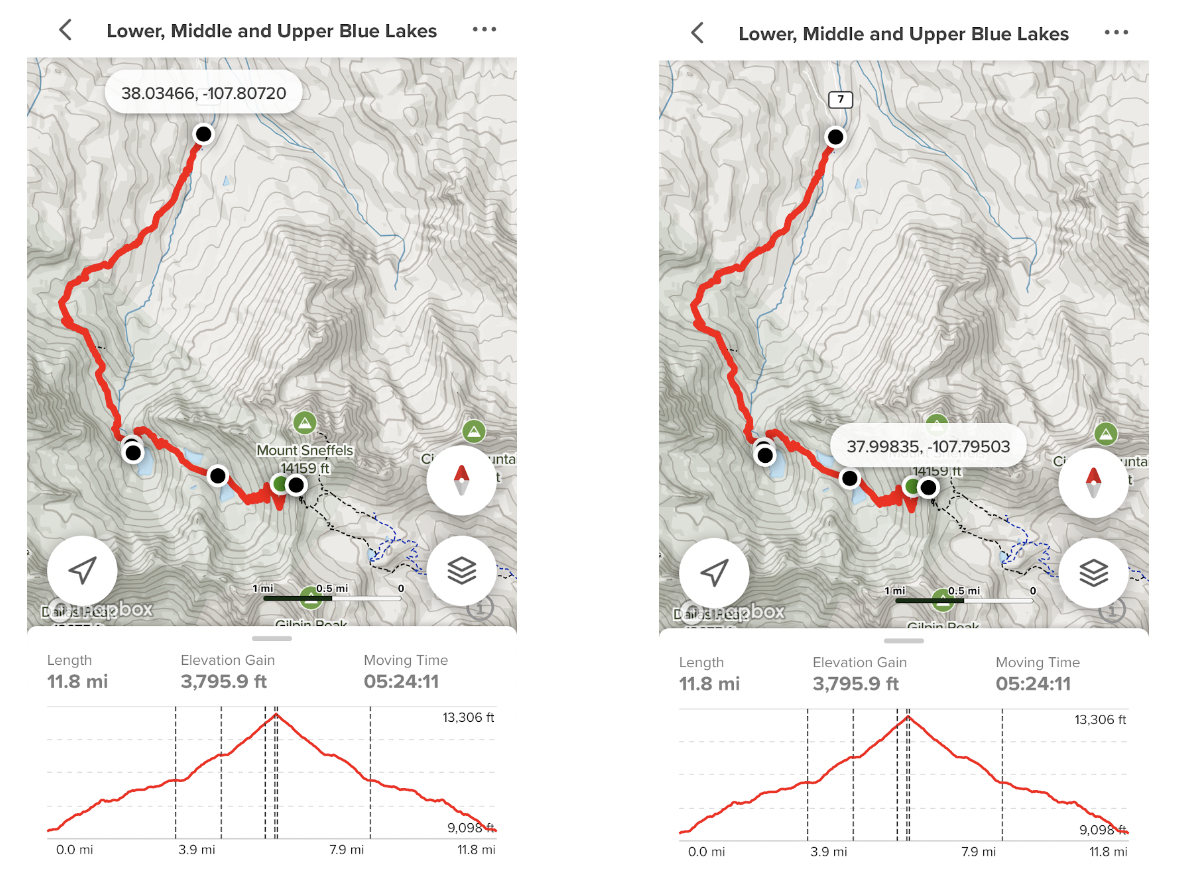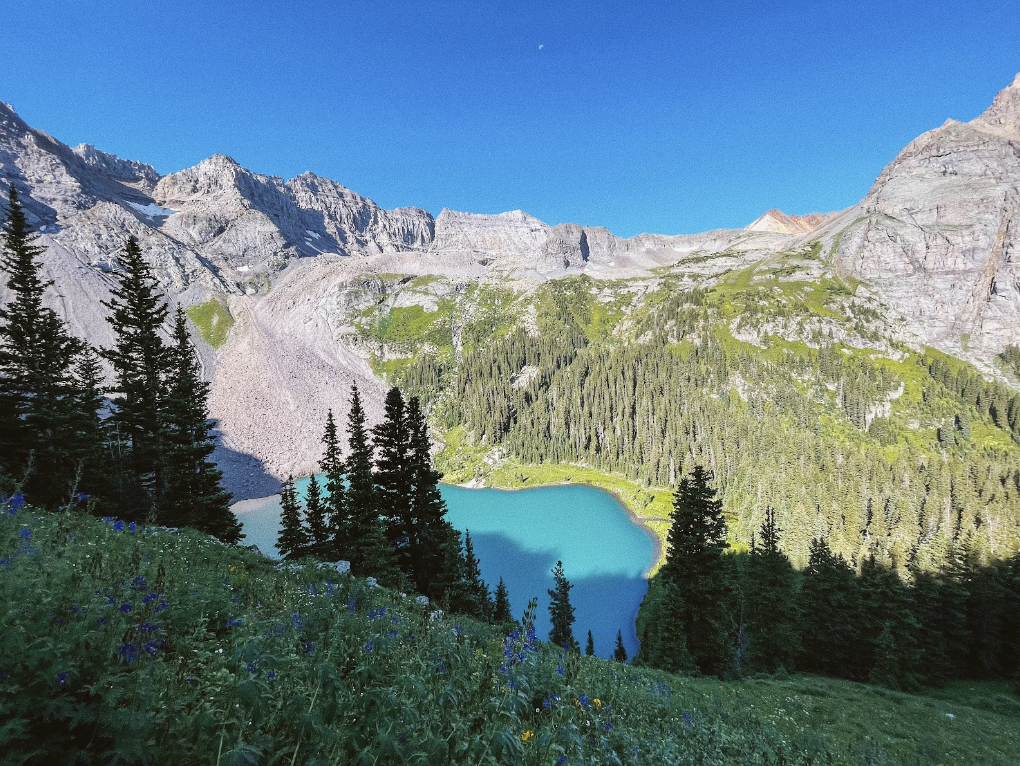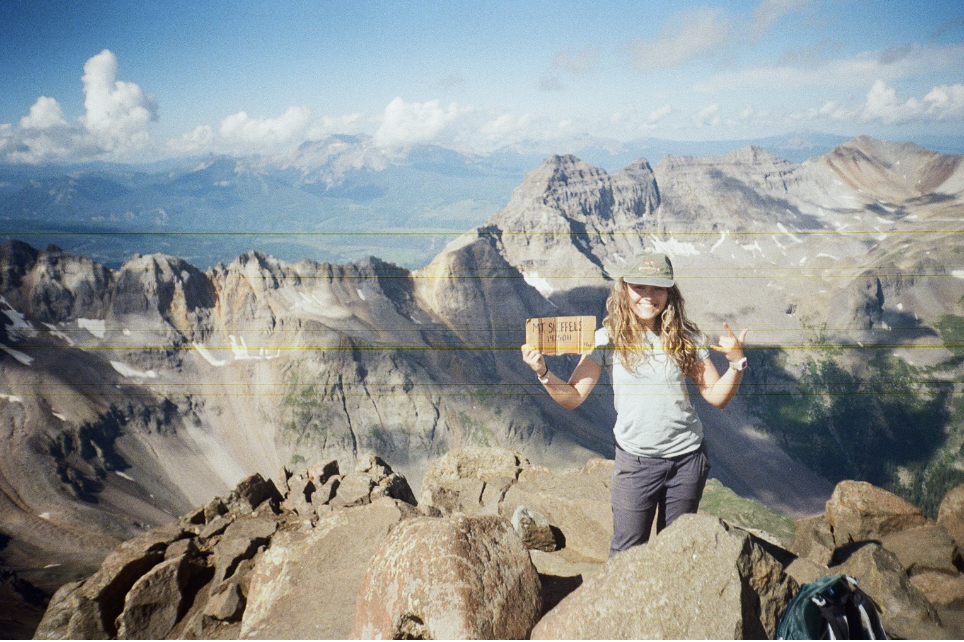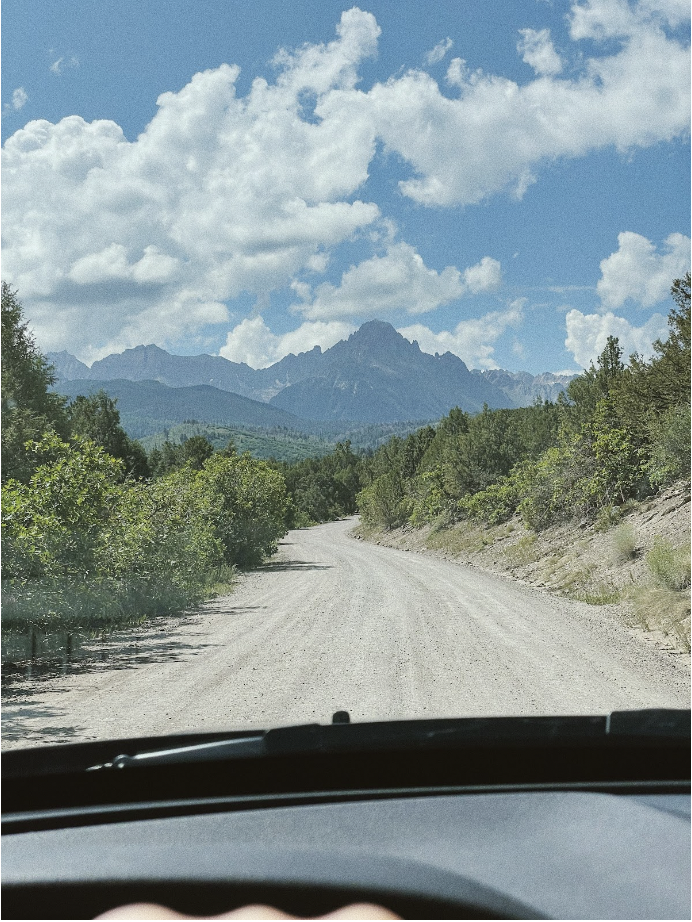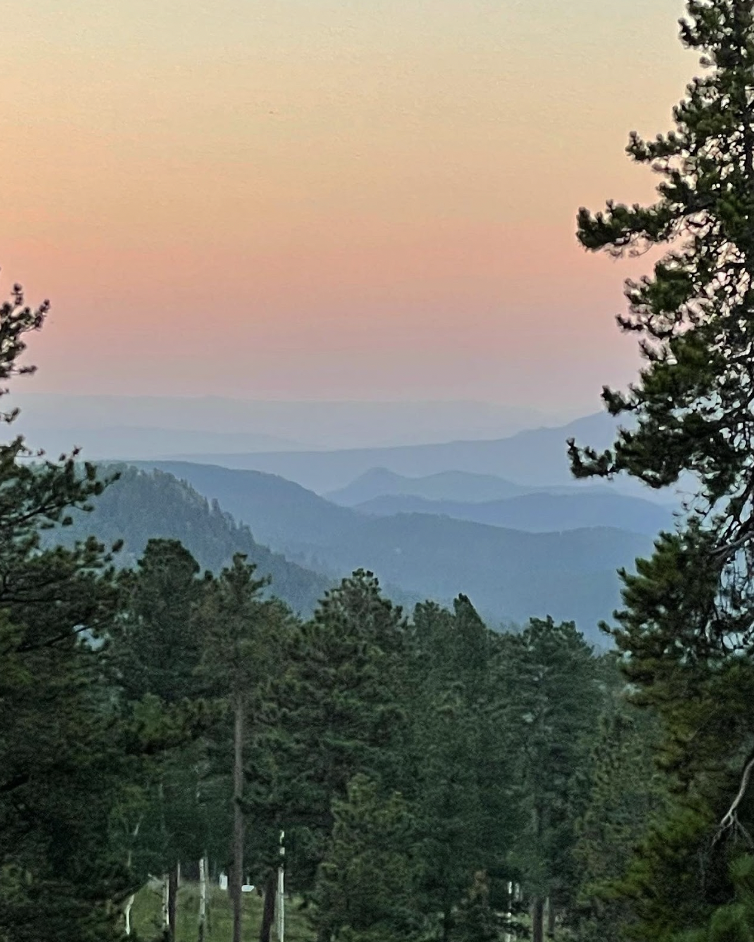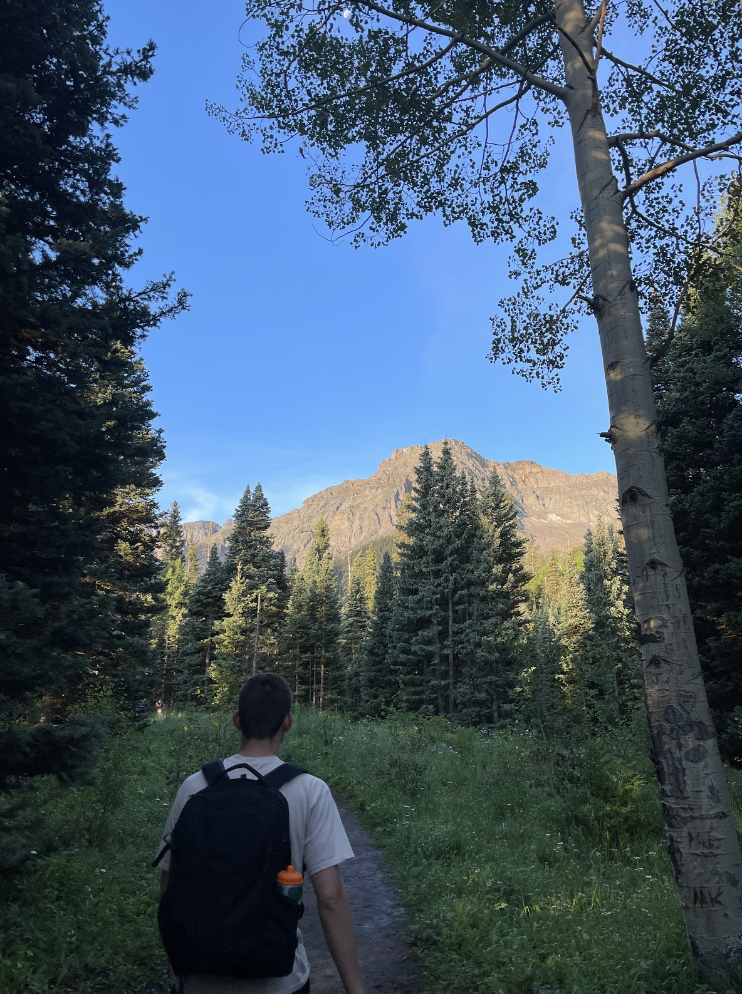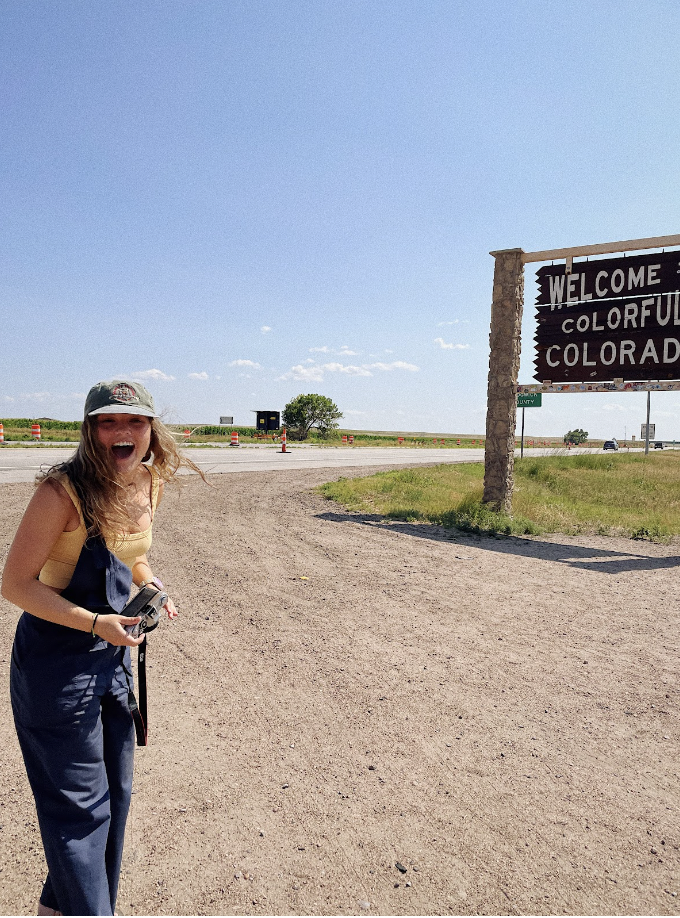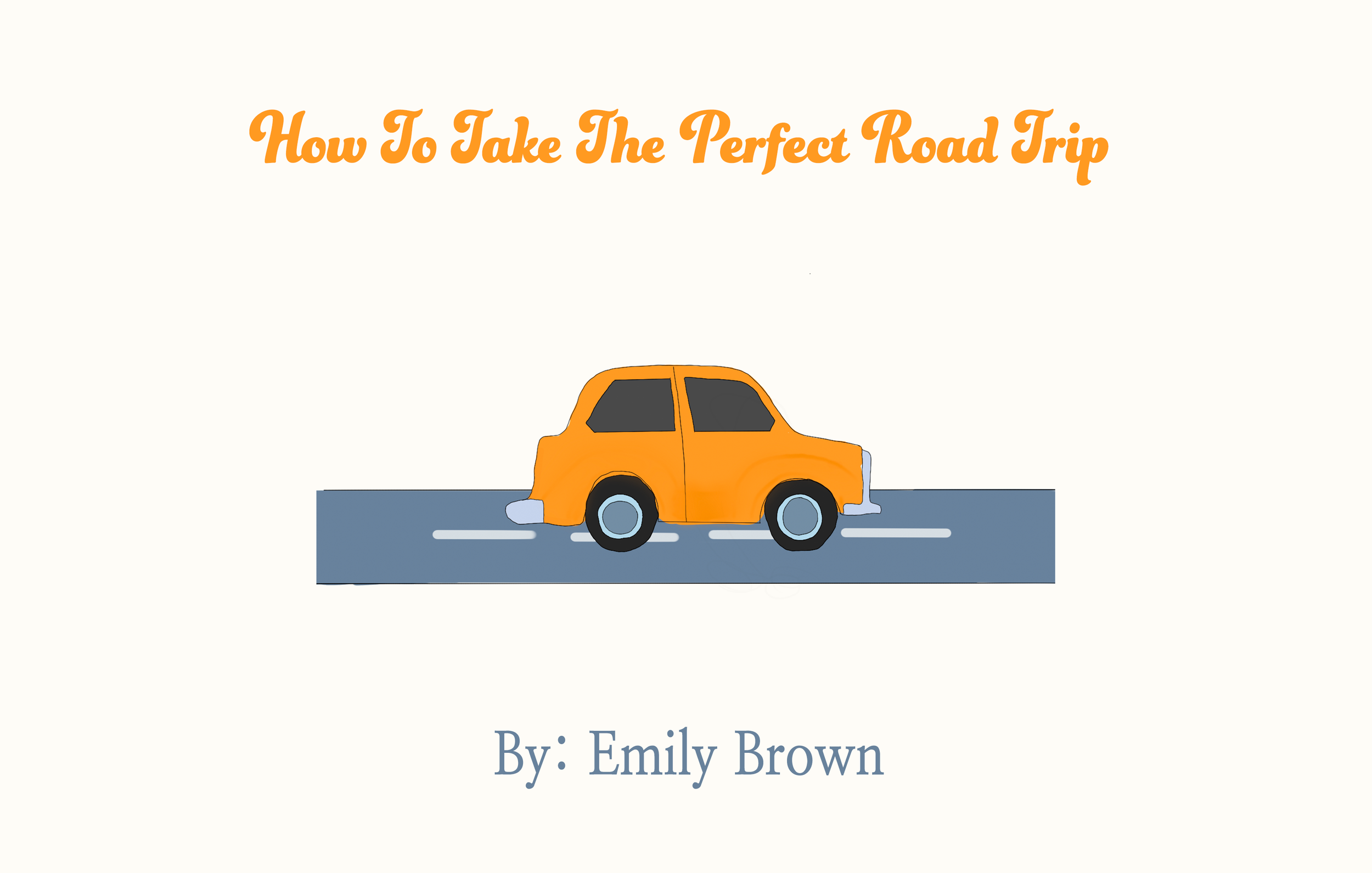May 1, 2022
Editor: Chava Makman
Artist: Halley Barger Elliott
There is no better way to spend a summer than by seeking out beautiful places and wide open spaces with friends on a road trip.
Here’s a quick note about me so that you know my advice is credible: Hi, I’m Emily Brown, a current junior at U of M. I hold Wilderness First Aid, CPR, AED, & Lifeguard certifications. After spending my childhood driving around the country with my family, I was inspired to begin backpacking, and have done so now for 11 years. I have been leading my own successful trips for around 4 years, and in the summer of 2019, I led 5 different backpacking trips for kids ages 9-13 all around Michigan.
My number one rule when it comes to taking a trip is, “always have a plan and a backup plan”. It’s natural to want to feel wild and free when we abruptly leave our hometowns for an adventure. I find that the best way to be wild and free on your trip is to have options in place before you leave. When you have options, you have the ability to choose. You can be spontaneous while also knowing that if something goes wrong, you’ll be able to find a solution. Here’s a rundown of how I do just that.
Step 1: Planning
I always make a Google Doc of my itinerary.
Here’s an example of mine from my Colorado trip:
Your itinerary can be as detailed as you want it to be — I recommend mapping it out each day. I also map by using GPS coordinates instead of by named locations on Apple/Google Maps. GPS coordinates are the most accurate location markers, and can easily be entered into Apple/Google Maps. It’s important to note that if you lose phone service, your navigation system will only work if you have entered in the coordinates before losing service. Make sure your car is ready to run: oil is set, tires are filled, and breaks work.
I plan driving days based on the hours I’ll be spending on the road, knowing my start point and endpoint, making sure I know of gas stops along the way. For days when I’m adventuring and not actively driving, I’ll put down GPS coordinates for specific trails that I might want to hike. I write at least three options for each day so I can choose what I want to do. If I’m doing a thru-hike or long trail, I’ll put down the approximate mileage I plan to cover each day, as well as the coordinates of the start and endpoints of the trail. For example, in late July, a friend and I did some backpacking in the San Juan mountains. One of the longer days we had was ~12 miles all around The Blue Lakes (I highly recommend this hike). Here’s a photo from my AllTrails of the coordinate points I used:
Apps can be helpful! Here are some I love:
Apple/Google Maps: Apple Maps does not work when you don’t have service, but if you put in coordinates ahead of time, these navigators do the job for driving
AllTrails: Downloadable trail maps, weather conditions, recent reviews, distance covered, speed, etc.
Gaia GPS: Similar to AllTrails, GPS that works when your phone service doesn’t. Downloaded maps will give you coordinates, elevation, distance covered, etc.
iOverlander: Allows you to check in with GPS coordinates & gives you lists of places near you that others have used to sleep/camp for free
Roadtrippers: Trip planning app that gives you approximate total costs of gas, places to eat, attractions, etc.
As a female traveler, I always make sure someone has a copy of my itinerary and knows approximately where I’ll be in case of an emergency. Since I go off-the-grid into the woods, I invested in a Garmin InReach Mini: a satellite phone/GPS tracking device that can send text messages with exact coordinates anywhere in the world. Make sure to always test your gear before you go!
Step 2: Expect the Unexpected
Never go into a road trip thinking it will go exactly as you planned because something spontaneous will happen, and you will need to change course. This past summer I had to move an entire trip from Rocky Mountain National Park to Telluride and the San Juan Mountains just 3 days before leaving when our camping permits fell through. Basically, just accept that change will occur. If you make “friends” with change, you will feel more confident and comfortable adjusting on the fly.
Step 3: Enjoy the Journey
When on the road, either alone or with friends, try not to have any expectations. I’m always excited, but I leave my expectations with the rest of my belongings at home. Since you have a basic plan and backup plans of activities, you are free to choose your own adventure. Also, what’s a road trip without a rocking playlist? Just like your maps, make sure you download your music ahead of time. There are some great playlists made by HY playlist producers that would definitely make an awesome soundtrack!
Step 4: Be Here Now
Do what the title of this step says. Enjoy. Just be. Do whatever your heart desires. Say “Hi” to people as you walk past them. Take a bunch of pictures/videos if that makes you happy. Shoot on digital or film. Delete your social media apps off your phone if you want to completely separate yourself from the rest of the world. Hopefully this can help you take the trip of your life! Here’s a few photos from my most amazing trip to date:
